A Women’s Traditional Saree is a symbol of timeless elegance and rich cultural heritage, worn for centuries across India and South Asia. It is a versatile garment, ideal for formal, festive, or ceremonial occasions, blending grace, beauty, and tradition. Whether it’s a wedding, festival, or cultural event, a traditional saree never goes out of style.
Key Features of a Women’s Traditional Saree:
- Fabric Variety:
- Silk: Luxurious and heavy, silk sarees are often worn during weddings and religious ceremonies. Popular types include Kanjivaram, Banarasi, and Mysore Silk.
- Cotton: Known for comfort and breathability, cotton sarees are ideal for daily wear or summer occasions. Examples include Khadi, Bengal Cotton, and Chanderi cotton sarees.
- Georgette/Chiffon: These lightweight fabrics offer fluidity and a soft, feminine drape, often chosen for evening parties, gatherings, or semi-formal occasions.
- Linen: Light, breathable, and perfect for semi-formal events or summer wear, linen sarees are often embellished with subtle embroidery or prints.
- Crepe: These sarees have a slightly crinkled texture, providing a flattering fit and soft flow, suitable for casual or formal wear.
- Traditional Weaves and Designs:
- Banarasi Saree: These silk sarees are famous for their intricate zari (gold/silver thread) work and are often worn at weddings or formal events. They feature floral, paisley, and geometric motifs.
- Kanjivaram Saree: A famous saree from Tamil Nadu, known for its vibrant colors, intricate borders, and rich silk fabric. Kanjivaram sarees are typically worn at weddings or grand events.
- Patola Saree: Known for its vibrant colors and double ikat weaving technique, the Patola saree from Gujarat is a unique and intricate traditional wear.
- Mysore Silk: These sarees are known for their smooth, shiny texture and understated elegance, often featuring golden borders and floral motifs.
- Chanderi Saree: Originating from Madhya Pradesh, Chanderi sarees are light, soft, and often have a shimmering quality, making them ideal for both day and evening wear.
- Paithani Saree: A traditional Maharashtrian saree, the Paithani features intricate zari borders and peacock or floral motifs, making it a favorite for weddings and religious ceremonies.
- Bandhani Saree: Famous in Gujarat and Rajasthan, these sarees are created using a tie-dye technique, giving them beautiful patterns and vibrant colors.
- Blouse Piece:
- Unstitched Blouse: Traditional sarees often come with an unstitched blouse piece that can be customized to fit personal style. This allows you to create a blouse with various necklines, sleeve lengths, and designs.
- Pre-Stitched Blouse: For convenience, some sarees come with pre-stitched blouses, often featuring intricate embroidery, beadwork, or mirror work, which complement the saree’s design.
- Embroidery and Details:
- Zari Work: Gold or silver threadwork adds a rich, luxurious appeal to traditional sarees, especially in Banarasi or Kanjivaram sarees.
- Mirror Work: Particularly in sarees from Rajasthan or Gujarat, mirror work adds an extra sparkle, perfect for festive occasions.
- Resham Work: Silk thread embroidery, often seen in Paithani or Patola sarees, is another traditional detailing that enhances the beauty of the saree.
Styling Ideas for Traditional Sarees:
- Wedding and Formal Events:
- Saree: Opt for a Banarasi silk or Kanjivaram saree in rich, deep colors like red, maroon, gold, or royal blue for a wedding or formal occasion.
- Blouse: Pair it with a heavily embellished blouse featuring zari, sequins, or mirror work to complement the opulence of the saree.
- Jewelry: Go for traditional wedding jewelry such as a choker necklace, maang tikka, jhumkas, and a kamarbandh.
- Hairstyle: Traditional buns adorned with flowers or a sleek low bun add to the elegance.
- Footwear: Juttis, Kolhapuris, or embellished heels will complete your look.
- Festive and Cultural Occasions:
- Saree: For festivals like Diwali or Durga Puja, a Chanderi or Mysore silk saree in bright, festive colors (yellow, green, orange, etc.) is perfect.
- Blouse: Choose a blouse with simple embroidery or threadwork for a graceful look.
- Jewelry: Opt for traditional gold jewelry with a modern twist, such as a long necklace or bangles.
- Hairstyle: Loose curls or a traditional braid with flowers (like gajra) can add to your festive charm.
- Footwear: Comfortable yet elegant ballet flats or sandals complement the traditional look.
- Casual Traditional Look:
- Saree: A cotton Khadi saree or a simple cotton saree in pastel shades is ideal for daily wear or smaller gatherings.
- Blouse: A basic, unadorned blouse or a simple short-sleeve blouse will keep the look relaxed.
- Jewelry: Minimalist gold or silver jewelry, like small studs or delicate bracelets, will keep the look simple.
- Hairstyle: Loose waves or a casual ponytail works best for everyday wear.
- Footwear: Comfortable flat sandals or mojaris are perfect for a casual yet traditional look.
- Semi-Formal Look:
- Saree: Choose a georgette or crepe saree with a subtle design or minimal embroidery for semi-formal events.
- Blouse: A simple blouse with a modern cut or high-neck design works well for a more contemporary approach to traditional wear.
- Jewelry: Go for elegant stud earrings, a delicate bracelet, and a simple necklace for a refined look.
- Hairstyle: Soft curls or a sleek, straight hairstyle works for a semi-formal look.
- Footwear: Opt for low heels or wedges to maintain a graceful appearance.
Where to Buy Women’s Traditional Sarees:
- Saree.com: A dedicated platform for sarees, offering a variety of traditional sarees in silk, cotton, and georgette, including Banarasi, Kanjivaram, and Paithani.
- Utsav Fashion: Known for its vast collection of traditional sarees, Utsav Fashion offers options in Banarasi, Kanjivaram, Mysore Silk, and many other weaves.
- Myntra: Myntra carries a range of ethnic wear and traditional sarees from popular brands like Biba, W, and Rangriti.
- FabIndia: FabIndia is a great option for handwoven, eco-friendly, and traditional cotton sarees, with a focus on natural dyes and artisanal crafts.
- Amazon: Offers a vast selection of traditional sarees in a range of fabrics and price points, from designer to more affordable options.
- Saree Palace: A renowned name in the saree industry, known for its collection of traditional, handwoven sarees, including Kanjivaram and Banarasi.
- Biba: Biba offers traditional sarees with contemporary styles, mixing ethnic prints and traditional weaves for a modern look.
Accessorizing Your Traditional Saree:
- Jewelry:
- Go for classic gold jewelry for weddings and formal events.
- For more casual events, opt for silver jewelry or pieces with minimalist designs.
- Footwear:
- Choose kolhapuris, jutti, or mojaris for traditional footwear that complements a saree.
- For more formal events, go for stiletto heels or block heels.
- Outerwear:
- Pair your saree with a traditional dupatta or shawl for an added layer of elegance, especially during colder months or formal events.
- Bags:
- Opt for a clutch or potli bag that matches the saree’s color for a cohesive look.
A traditional saree reflects both personal style and cultural heritage, making it an essential garment in every woman’s wardrobe.
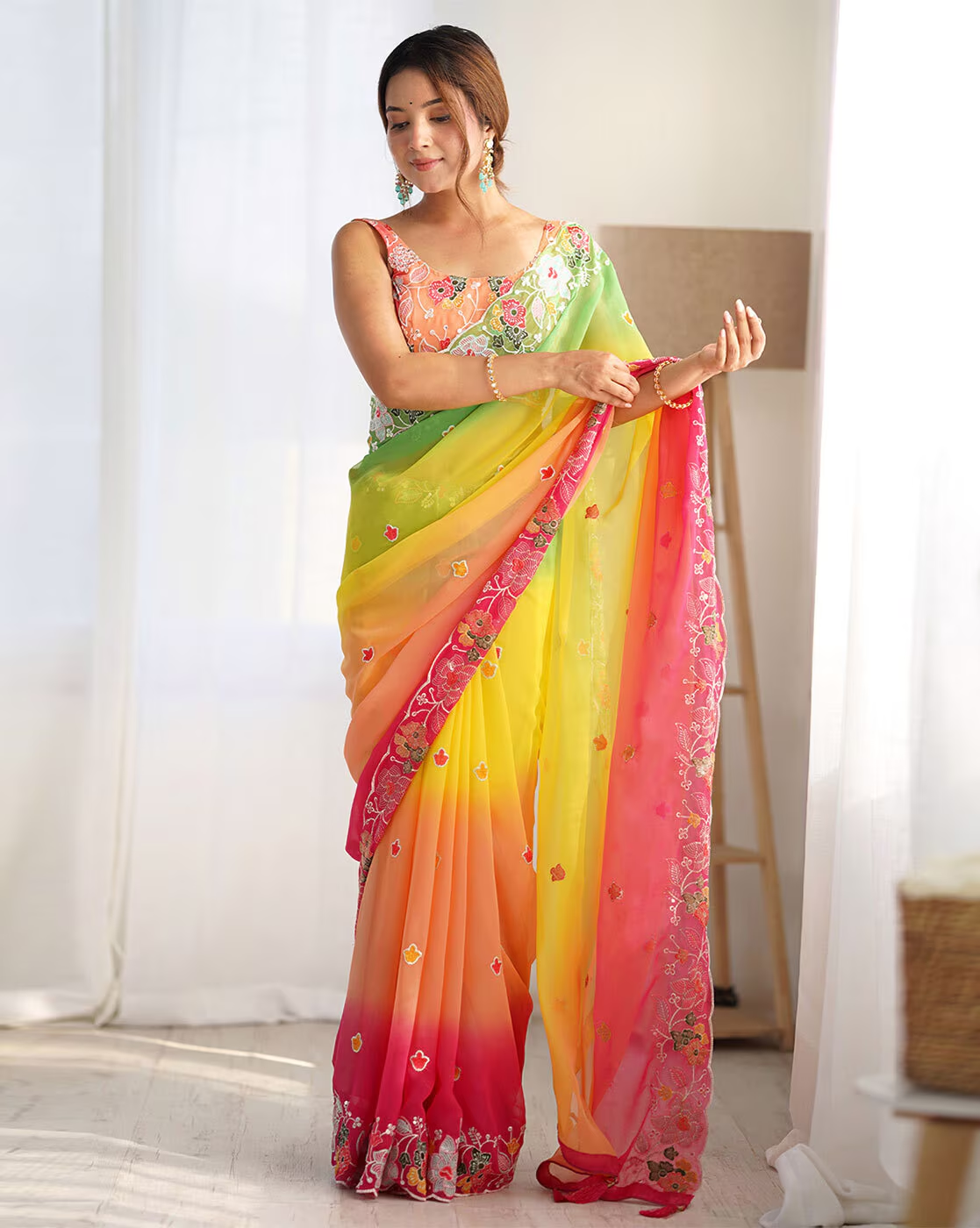

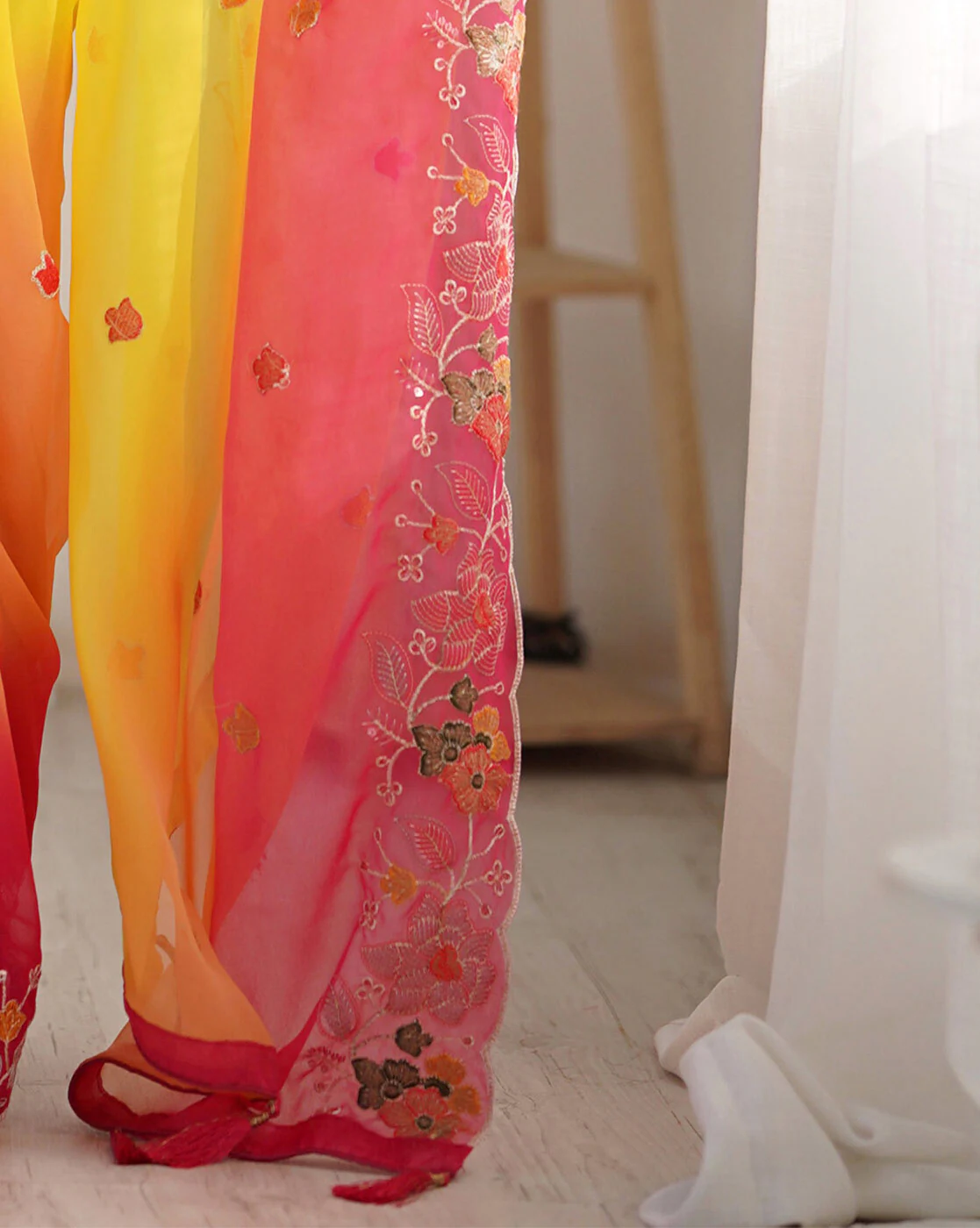
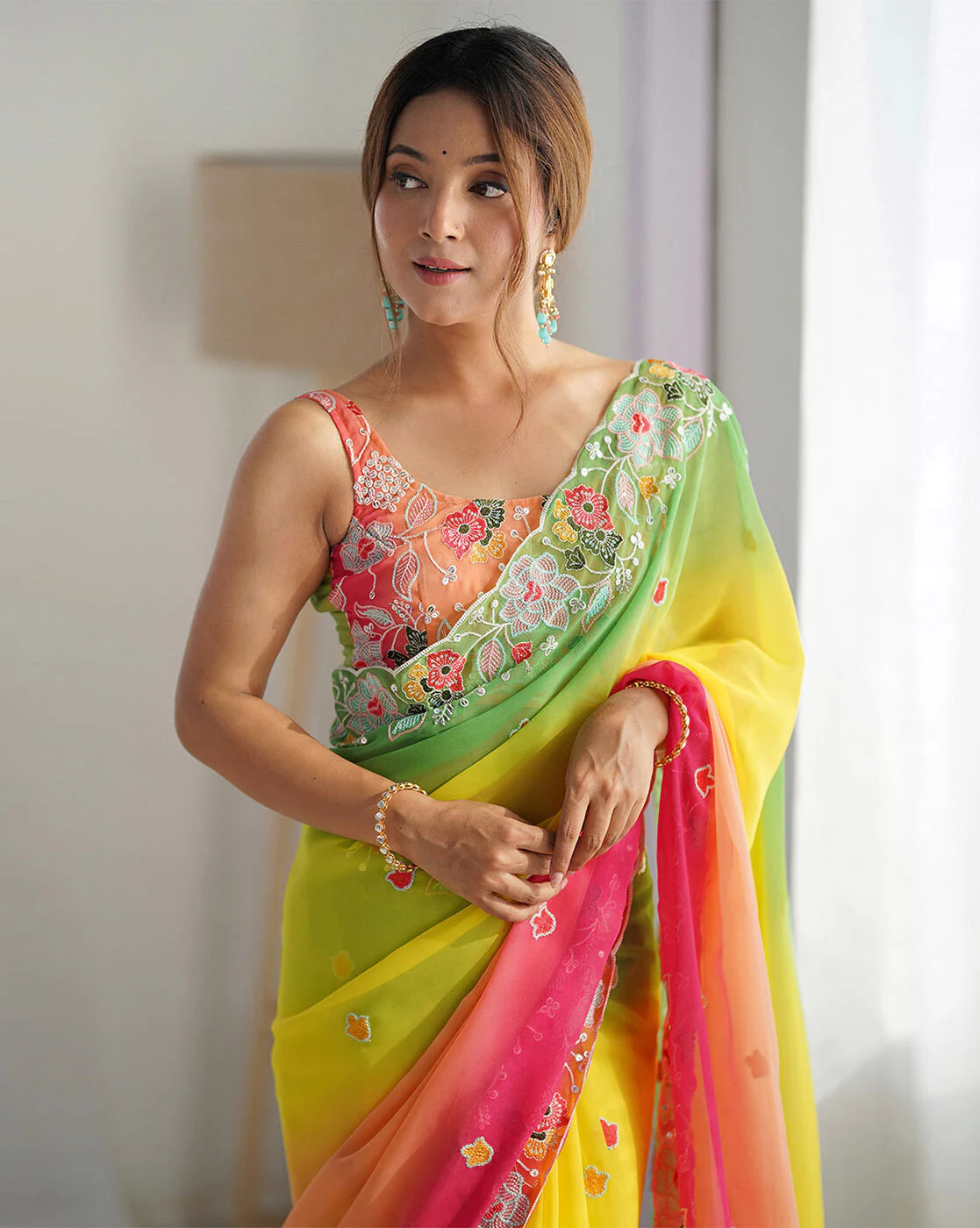
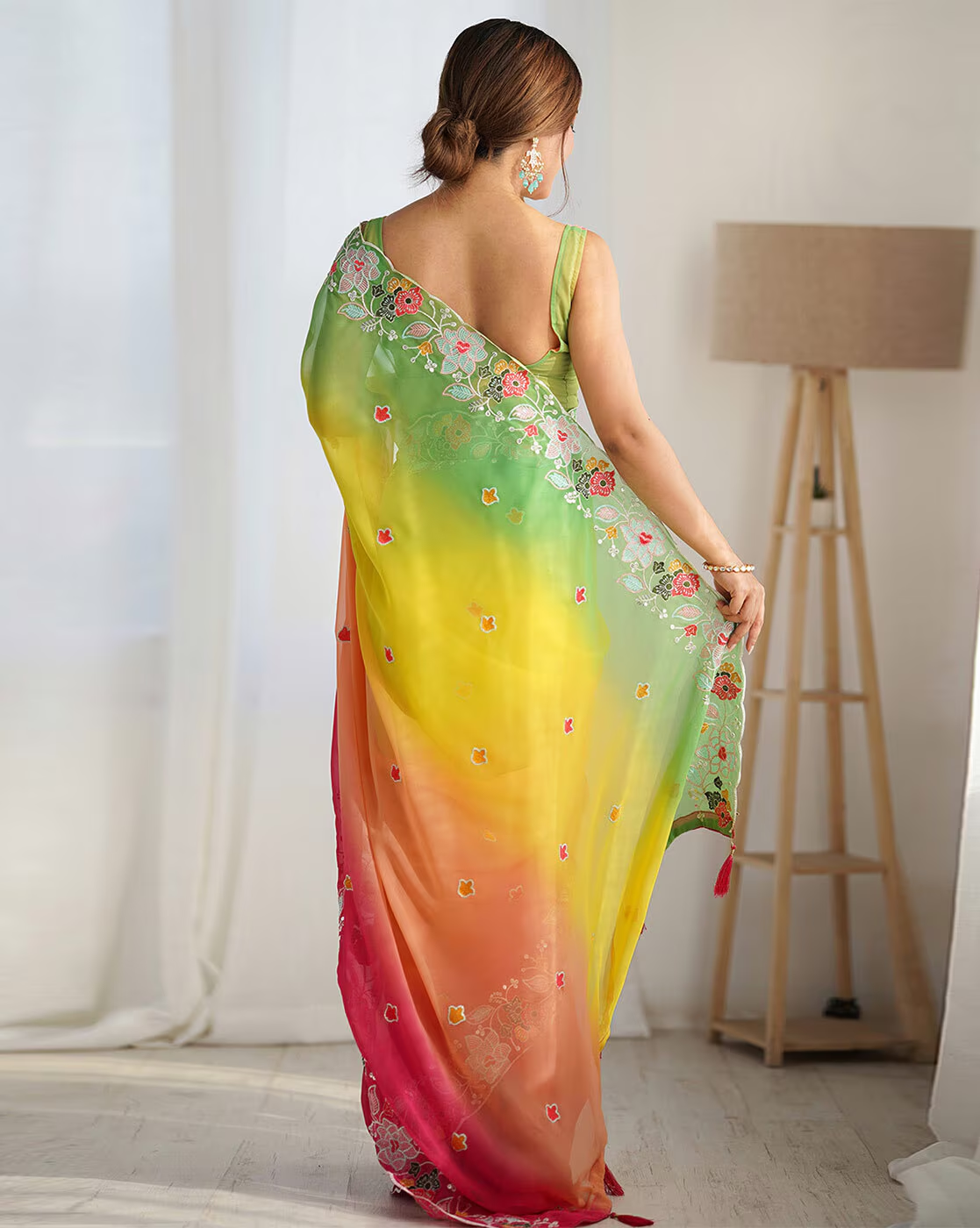
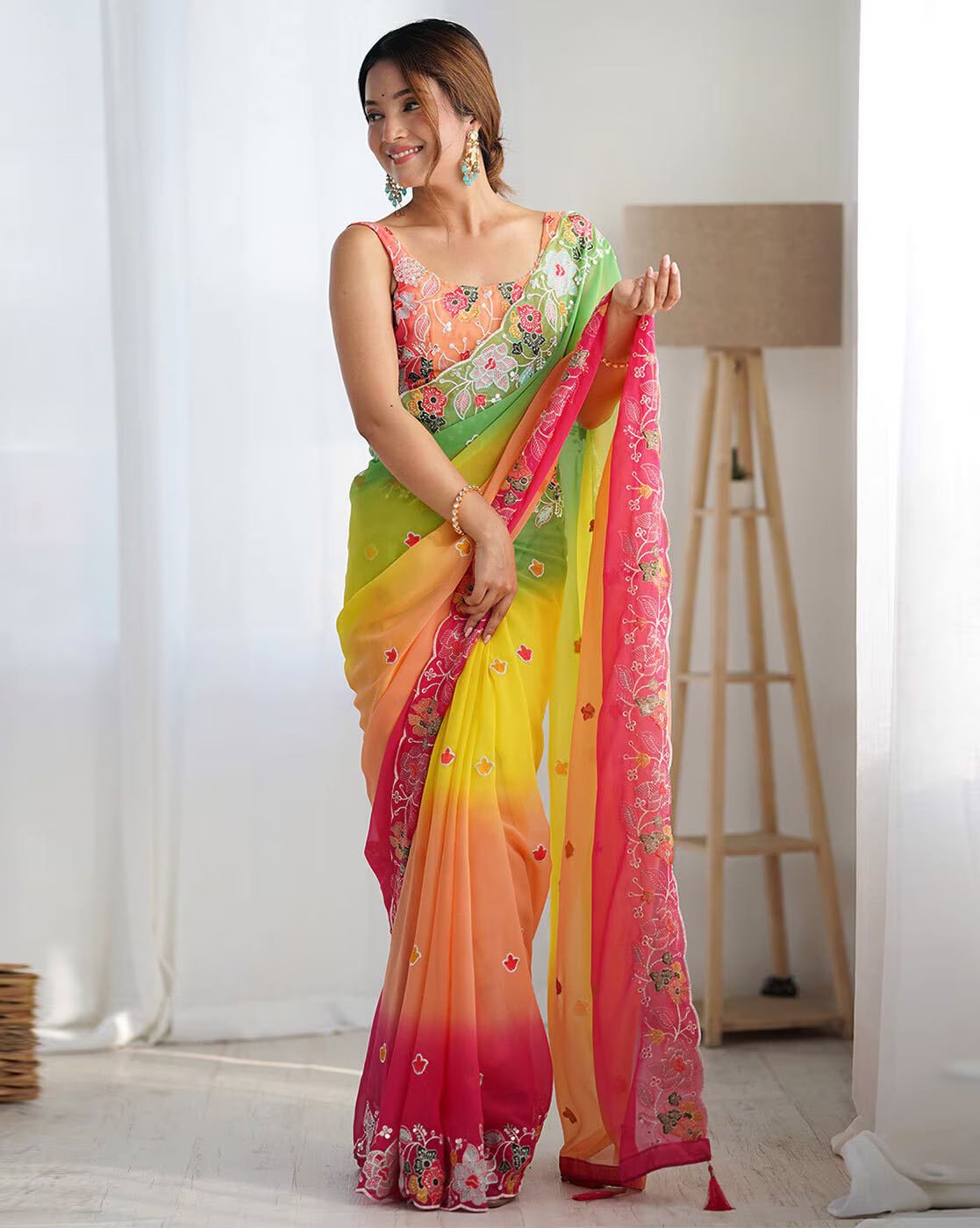
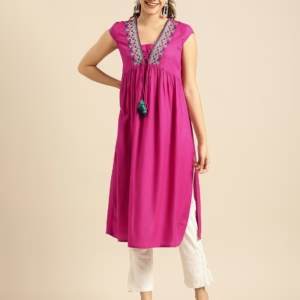
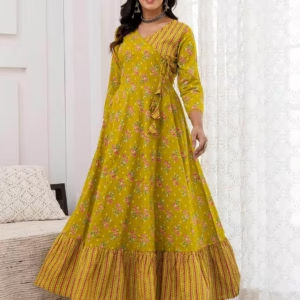
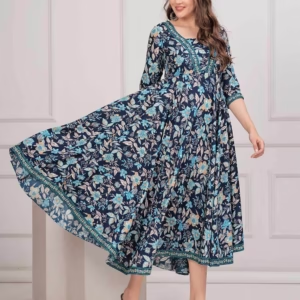
Reviews
There are no reviews yet.